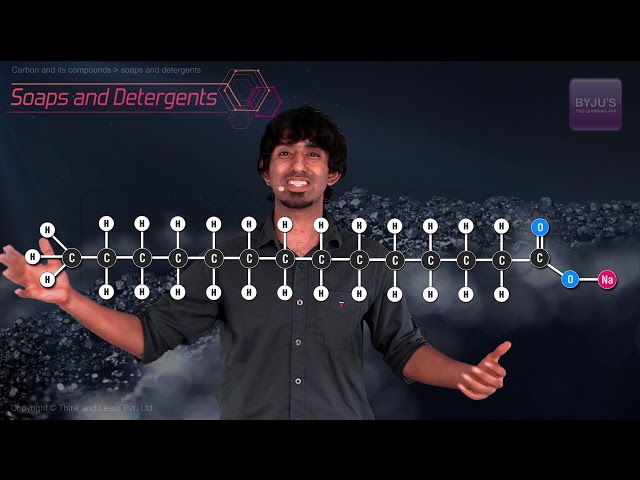What is Emulsification?
Emulsification is the formation of emulsions from two immiscible liquid phases is probably the most versatile property of surface-active agents for practical applications and, as a result, has been extensively studied.
The process of dispersing one immiscible liquid into another immiscible liquid is called emulsification. Some common emulsifying agents are detergents and soaps, etc. This process is widely carried out in industries by mechanical mixing of the ingredients of the emulsion in different types of mixers.
Table of Contents
- Some Examples of Emulsions
- Emulsifier
- Aims of Emulsification
- Emulsification Process
- Emulsion Uses
- Recommended Videos
- Frequently Asked Questions – FAQs
Some Examples of Emulsions:
- Egg yolk – contains the emulsifying agent lecithin.
- Butter – water in the fat emulsion.
- Oil and water mixture.
- Mayonnaise – an emulsion of oil in water.
- Crema on espresso – an emulsion of water and coffee oil.
Emulsifier
An emulsifier is a substance that stabilises an emulsion. It is also called emulgent. Surfactants such as detergents are one type of emulsifier. Surfactants are also referred to as surface-active agents.
Some examples of emulsifiers are lecithin, soy lecithin, diacetyl tartaric acid ester of monoglyceride, Mustard, sodium stearoyl lactylate, and sodium phosphates.
Aims of Emulsification
The emulsification unit operation has three specific aims. First, it has to ensure the physicochemical stability of the product. Emulsification determines the characteristic structure of the batter which greatly influences fat and moisture separation from the product during cooking.
Second, it creates a typical sensory property such as appearance, texture, flavour or noise. Finely comminuted products are defined by their smooth surface.
Emulsification Process:
Some mechanisms involved in emulsification are discussed below.
- According to surface tension theory, emulsification is carried out by reducing the interfacial tension between the two phases.
- According to the repulsion theory, a film is created over one phase by the emulsifying agent. The film forms globules, that repel each other. This is their cause for suspension in the dispersion medium.
- Viscosity modification – Some emulgents like acacia, glycerine, and carboxymethyl cellulose, increase the viscosity of the medium. This helps in maintaining and creating the suspension of globules of the dispersed phase.
Emulsion Uses:
- Usually used in cosmetics, pharmaceuticals, and personal hygiene.
- Microemulsions are used to deliver vaccines to kill various microbes.
- It is used in chemical synthesis.
- It is used in firefighting.
- Nanoemulsions such as soybean oil are used to kill microbes.
- Mayonnaise is an oil in water emulsion with egg yolk or sodium stearoyl lactylate.
Recommended Videos

Frequently Asked Questions – FAQs
What is called emulsification?
Emulsification is called the process of mixing liquids to form an emulsion. Although the liquids forming them may be clear, emulsions appear cloudy or coloured as light is dispersed by the mixture’s suspended particles.
What is the role of emulsification?
Emulsification in digestion is the breakdown of fat globules in the duodenum into small droplets creating a larger area where the pancreatic lipase enzyme can work to digest the fat into fatty acids and glycerol. The activity of the bile salts helps to emulsify the fats.
What is the significance of the emulsification of fat?
Emulsification is the process of breaking down the fat into smaller blood cells which makes it easy for enzymes to function and digest food. Fat emulsification helps digest fats into fatty acids and glycerol that are easily absorbed by the small intestine.
What is the difference between emulsification and digestion?
Emulsification, breaking up fat globules into much smaller emulsion droplets, greatly helps in digestion. Also, a substance called bile is produced by your liver, which is secreted into the small intestine. It breaks up the fat in an emulsification cycle that effectively makes the fats water-soluble.
What is a natural emulsifier?
An emulsifier is an ingredient that binds water to oil to produce an emulsion that is just like a cream or lotion fancy term. Beeswax is extremely beneficial for the body because it keeps the skin hydrated. Candelilla wax can be used as a natural emulsifier in homemade creams, lotions, and balms. carnauba wax. Carnauba wax is a great natural emulsifier.”
What is an emulsifier?
What is an emulsion?
What are the applications of emulsion?
What are the different types of emulsion?
Is paint an emulsion?
To get the latest updates on chemistry chapters, keep visiting us. For detailed notes on emulsification from the experts, register now!
Other important links:
| Types of emulsions | Classification of colloids |


Comments